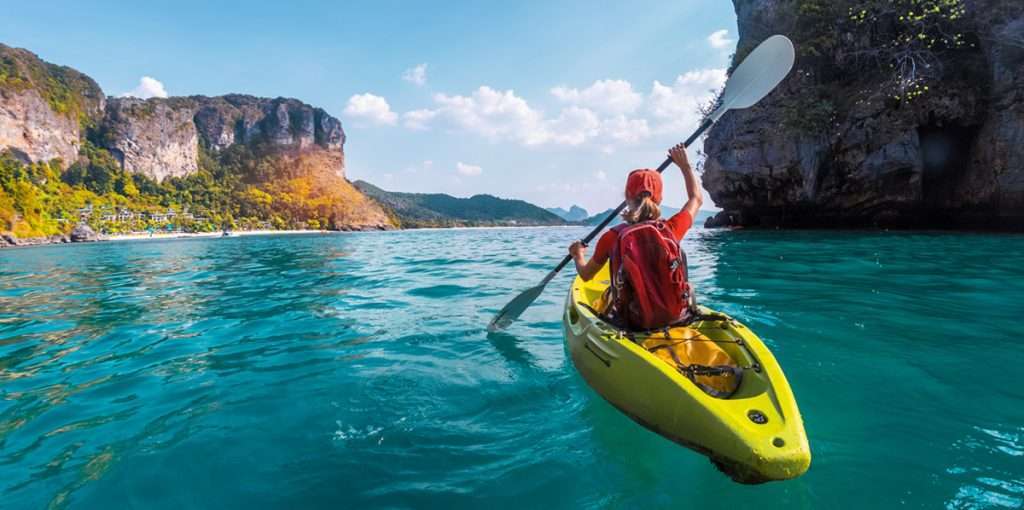Well the time has come for some of thus who experience four seasons to abandon temporarily our favorite activity and think about storing our kayaks and canoes.
Parks are now closed, cold and ultimately snow and ice will be present and invite us for winter sports or other type of outdoor activities. And yes, it’s always possible to play outdoor even during those super cold winter months!
What Do We Do With Our Equipment?
You may think it’s easy to store your equipment and does not require great knowledge to do that.
However a little planned care for your kayaks or canoes and other related accessories can result in better and safer paddling when the season comes back.
It’s a fact of life everything gets old even your boats! Throughout the years, you can expect scratches, holes, real cracks (those kind that get you worried), faint painting. We’re not living in an ideal world so we need to plan maintenance care and storage at least once a year.
Your safety and pleasure on the water depends on it!
I discovered by experience using expensive outdoor equipment, that there are three steps not to be forgotten:
- Cleaning
- Repair and maintenance
- Adequate conditions for storage
Follow these three simple yet very effective principles for any of your gears (kayaking, scuba diving, camping, hiking…) and you’ll be able to enjoy safe and performing equipment during all your seasonal and favorite activities!
Cleaning Your Gear
We all agree that when you unpack your stuff at spring time it feels much nicer to find cleaned boots, stoves, sleeping bags, tents and boats!
Boats and folding boats:
- Remove all lose components (straps, seats, hatch covers) and wash them with warm fresh water using a mild detergent (don’t use strong commercial products or bleach that will burn the fibers). Rinse well thoroughly afterwards. Don’t forget to wash also your personal flotation device!
- Remove salt water and sand from your kayak or canoe or diving gear (regulators): rinse the boats, and all the attached parts (deck cords, toogle handles and bulkheads), pedals, rudder or derive
- Use an eraser-type sponge if your kayak stays in the water during the entire season
- Try to check all the O rings for dirt and clean well the openings of your dry compartments.
- And most of all let all your gear dry properly –put your boats upside down and off the ground. Use a towel if necessary.
Paddles:
Paddles are very expensive, I keep all our paddles in a safe place in our basement during those lng winter times.
If you have 2-pieces paddles then store them in separate pieces. But before that, clean the joints both inside and outside with a small bottle brush (I’m using my old baby bottle brush!):
After this easy step I simply wash and rinse the paddle carefully and dry with a soft towel.
I do the same thing for my canoe’s wood paddles.
Drysuits, wetsuits and PFD’s
Before anything else wash them and dry them very carefully. Actually this is the same thing you should do after each use! Check all zips carefully during that process.
One thing for sure: Do not put your wet suits in a washing machine!
If you need to replenish the waterproof treatment of on your PFD or dry suit then the best thing to do is to consult individual manufacturers for guidance.
Repair and Maintenance
Check carefully every boat and every piece of equipment to see if any repairs need to be done.
And don’t be lasy. If you see something wrong, just repair it now!
Adequate Conditions for Storage
You need to put your canoes or kayaks in a safe place. That is somewhere where they won’t get damaged.

